Having a constipated kid is one of the more unpleasant experiences in parenthood. Constipation is uncomfortable for them, and as a result, is uncomfortable for you. Luckily, whether they are experiencing acute (temporary constipation) or chronic constipation, there are many natural home remedies that can help.
Inside this article, I will walk you through what you can do for your baby, toddler, or older kid to prevent (or reverse) constipation using natural remedies.
*This post was originally published on July 24, 2019. It has been revised and updated in October 2023.

Table of Contents
How to tell if your kid is constipated
Constipation is not a fun feeling for kids, they experience many of the same symptoms as adults. Older kids can likely identify or at least let you know when they are having symptoms of constipation. But in younger kids, it can be more difficult to identify.
If your child has fewer than 3 bowel movements a week and has hard, dry/lumpy stools and poop that is painful/difficult to pass, there is a good chance they are suffering from constipation.
Signs of constipation in kids
As a parent, it is important to pay attention to your child’s behaviors, they will often give you signs they are constipated. Some common symptoms of constipation in babies, toddlers, and kids include:
- Straining to poop
- Crying when going to the bathroom (common in babies)
- A touch of blood left on the toilet paper or in the diaper
- painful bowel movements
- Fewer than normal trips to the bathroom
- Frequent trips to the bathroom with small hard stools
- Feeling bloated and full (are they holding their belly?)
- Frequent bedwetting
- Recurrent UTIs in girls
- Behavior issues/meltdowns (especially in young children)
- Nausea/feeling like they are going to vomit after eating
Kid poop chart, what is normal?
Getting a visual of your children’s poop is a good way to determine if they might be struggling with constipation.
To help you identify if your child’s poop is normal or not, the Bristol Stool Chart is helpful. Type 3 (looks like corn on the cob) and type 4 (looks like sausage) are considered “normal poops” on the chart.
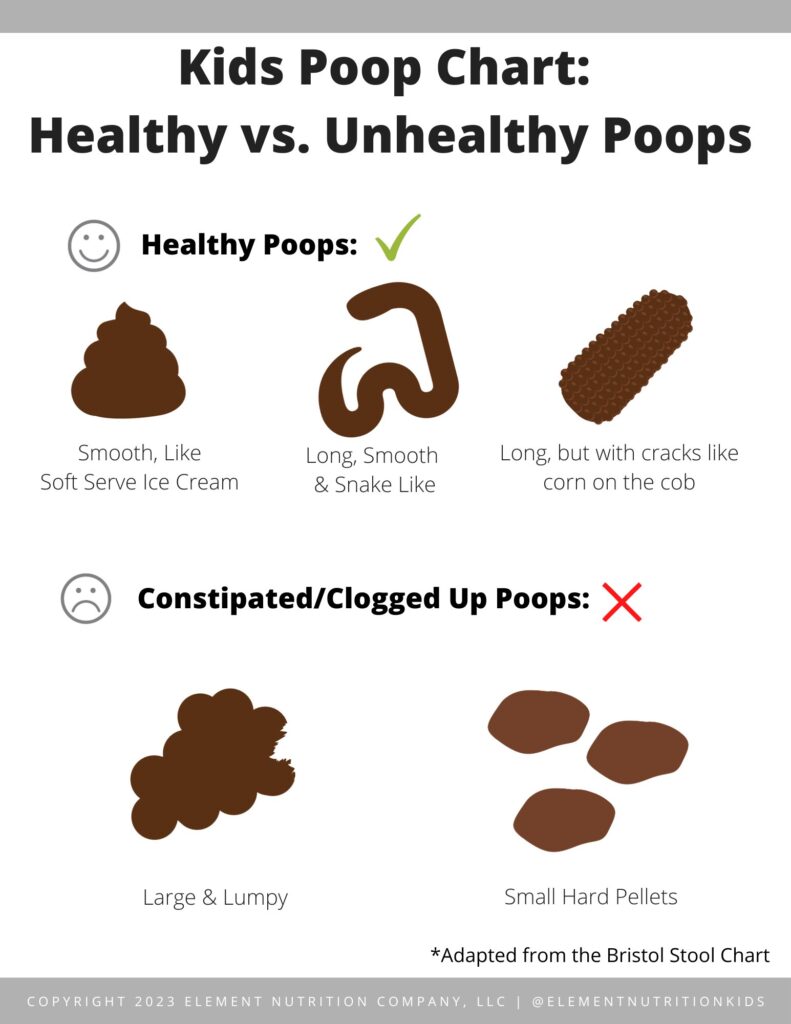
Ideally, when they go, their poop should be smooth and long. If your child’s poop is extra lumpy and hard or looks like tiny marbles (rabbit poop or grapes), there is a good chance they are constipated.
If you start to notice lots of “skid marks” or liquid poop in your child’s underwear, that could also be a sign of constipation (also called encopresis.)
Basically what happens is the poop gets hard and collects in your child’s colon or rectum. When it gets super full, liquid stool can leak out around the hard poop and out into their underwear. Parents often think this is diarrhea, but it’s not!
If you think your child is experiencing encopresis, it’s important to focus on getting the ball or hard stool passed and cleared out right away. Then focus on maintaining softer stools with diet, fluids, and movement, which I’ll talk about more below.
Repeatedly having large stool volumes build up in the colon/rectum can cause stretching leading to holding more poop in there. It’s a vicious cycle.
Talking about your kid’s poop isn’t very glamorous I know, but once you learn to identify what is normal and what is not, it takes a lot of the stress away.
Causes of Constipation In Kids
Everybody is different, so it is important to get to know your child’s routine and what is normal for them. When you figure out the root cause of their constipation, you can determine which natural remedies for constipation will help most. Here are some of the most common reasons kids get constipated:
1. Avoiding the urge to go
- Ignoring the urge to go too frequently produces hard, dry stool that makes it even harder the next time.
- This can lead stool to back up in the rectum and may also press on the bladder causing children to wet the bed at night.
- Over time, this can cause chronic constipation.
- Kids who avoid the urge to go often don’t want to miss playtime or they may be afraid to go because of the pain associated with pooping.
2. Discomfort or Embarrassment
- Children may be uncomfortable or embarrassed about using the restroom outside of their homes and instead avoid having a bowel movement altogether.
- Many children report they don’t like to use the bathrooms at school so they will hold it until they get home. You might be surprised how often I hear this in my office.
- Kids will often avoid going to the bathroom at friends’ houses, at overnight camps, or in other less comfortable environments. If this is a chronic issue, it can lead to problems.
3. Interrupting Playtime
- Children may not want to stop playing to take a trip to the bathroom, so they hold it in.
- Encouraging regular bathroom breaks when at home can help create a routine and ensure they are not going to miss playtime.
- This is very common in constipated toddlers
4. Not drinking enough fluids
- The fluid is required to move food through the GI tract. When kids don’t drink enough fluids throughout the day, it is harder to pass digested food waste through their bodies. This can cause hard stools that back up.
- Stool backups can stretch the rectum creating more backup.
5. Medications and supplements
- Iron supplements, pain medications, and anticonvulsants can result in constipation. If your child is taking any of these medications, be sure to monitor their bowel movements.
- Discuss these medications with your doctor or dietitian.
6. A diet low in fiber
- Fiber comes from fruits, vegetables, legumes, and whole grains. Kids who are not offered a variety of fiber-rich foods or those with picky eating tendencies who refuse these foods may be more likely to become constipated.
- I’m not a huge fan of fiber supplements, but there may be times when they are beneficial. Always talk to your child’s doctor before starting a fiber supplement.
7. Not enough movement
- Kids who spend a lot of time sitting (at school, watching TV, video games, etc.) may struggle more with constipation.
- When the body is moving the bowels are moving. Encouraging regular activity along with enough fiber and fluid is a big help for pooping.
Fiber for kids: how much do they need?
The American Academy of Pediatrics recommends that kids get enough fiber each day. One of the methods they recommend (and the one I find easiest for families) is to use the age of your child + 5 to get grams of fiber each day.
Example: If your child is 4 years old then 4 years + 5 grams = 9 grams of fiber per day.
Most children are NOT getting enough fiber each day. This is why constipation is one of the most common childhood issues.
If numbers stress you out, don’t worry about counting fiber grams. Instead, focus on your child getting at least 5 servings each day of fruits and veggies as well as whole grains. This will help them meet their fiber needs.
Home remedies for constipation in children
If your child’s constipation is new, or mild, start with diet changes and hydration. And then, maintain these changes. If their constipation is severe, be sure to discuss it with your pediatrician.
1. Increase fiber
- Fiber adds mass to stool, reducing strain and discomfort and making it easier to pass through and out of the body.
- If a child is already severely backed up, fiber from food can make it worse. So talk to their doctor first to determine if medication is needed as the first step. If constipation is mild, increasing fiber can help.
- Increase fiber in the diet slowly and make sure they get plenty of water (see step 2.)
- See the list of foods recommended below.
2. Add more fluids
- Hydration is essential to regular bowel movements, particularly if more fiber is added to the diet.
- If the fiber is increased without adequate hydration, poop is bulked up, but still difficult to pass and that will make constipation worse.
- Keeping your child properly hydrated softens the poop so it is easier to pass.
- A quick guideline: children should drink the number of 8 oz. glasses of water equal to their age (up to 8 years)
- So, if your child were 3 years old, they would drink (3) 8 oz. glasses of water (or 24 oz of fluid) throughout the day
- Limit milk intake if your child is drinking a lot. Too much milk can make constipation worse. For most kids, I like to cap milk at 16 oz. per day.
3. Movement
- Exercise stimulates the bowels, moving the body will help move the poop
- Schedule structured or unstructured playtime each day
- The goal is more than 60 min. per day of movement.
4. Belly massage
- Gently rub your child’s belly in a clockwise circular motion, this can help stimulate the bowels. I like this abdominal massage visual from Children’s Minnesota.
- Using a small amount of oil (such as extra virgin olive oil or castor oil) on the tummy during the massage may also help.
- I also like to have kids do “bicycle kicks” by laying on their backs on the ground and pretending they are riding a bike with their legs.
- Moving their knees in and out also helps
5. Pre/Probiotics
- While there isn’t a lot of evidence (from published research) that probiotic supplements significantly improve constipation, there is some research suggesting it might increase motility (1). Both lactobacilli and bifidobacteria may promote colonic peristalsis (movement) which helps kids poop.
- Eating probiotic-rich foods (and prebiotic-rich foods) helps to support the healthy gut bacteria which can in turn produce healthier stools, so do focus time here.
- Probiotic supplements are generally considered safe when taken appropriately, so a supplement might be worth it if your kid struggles with constipation.
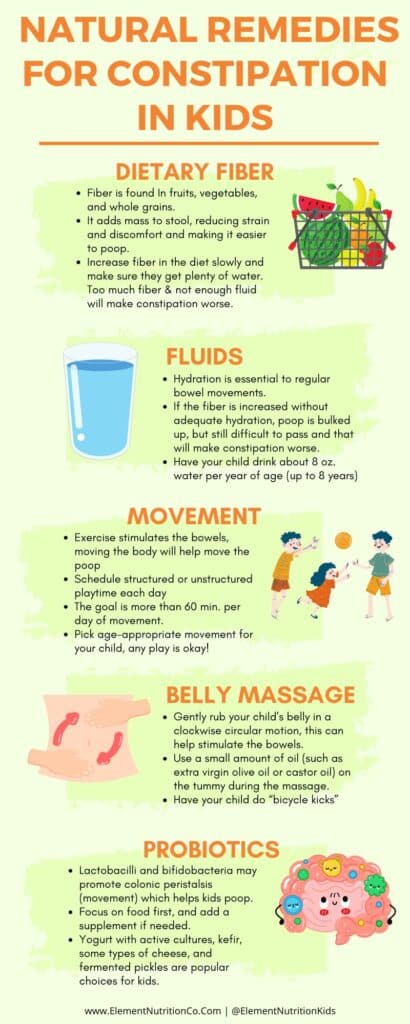
Chronic/severe constipation in kids
If your child is severely or chronically constipated, they may need medical intervention to get things moving. Be sure to talk to their healthcare provider. Many parents come to me because they absolutely don’t want to use Miralax or other medication laxatives, and I totally get it.
However, there are times when medication intervention may be needed. In this case, I like to encourage parents to look at it as a temporary solution.
Doctors will often prescribe an enema along with Miralax or a stool softener to help pass the poop. Once the hard stool is out, and the poop is consistently softer, kids will start feeling more confident going regularly without fear of pain. Going this route will allow the rectum time to heal and go back to normal size, but can take several months, so be patient. And, in the meantime, keep working on their fiber, fluid, and movement.
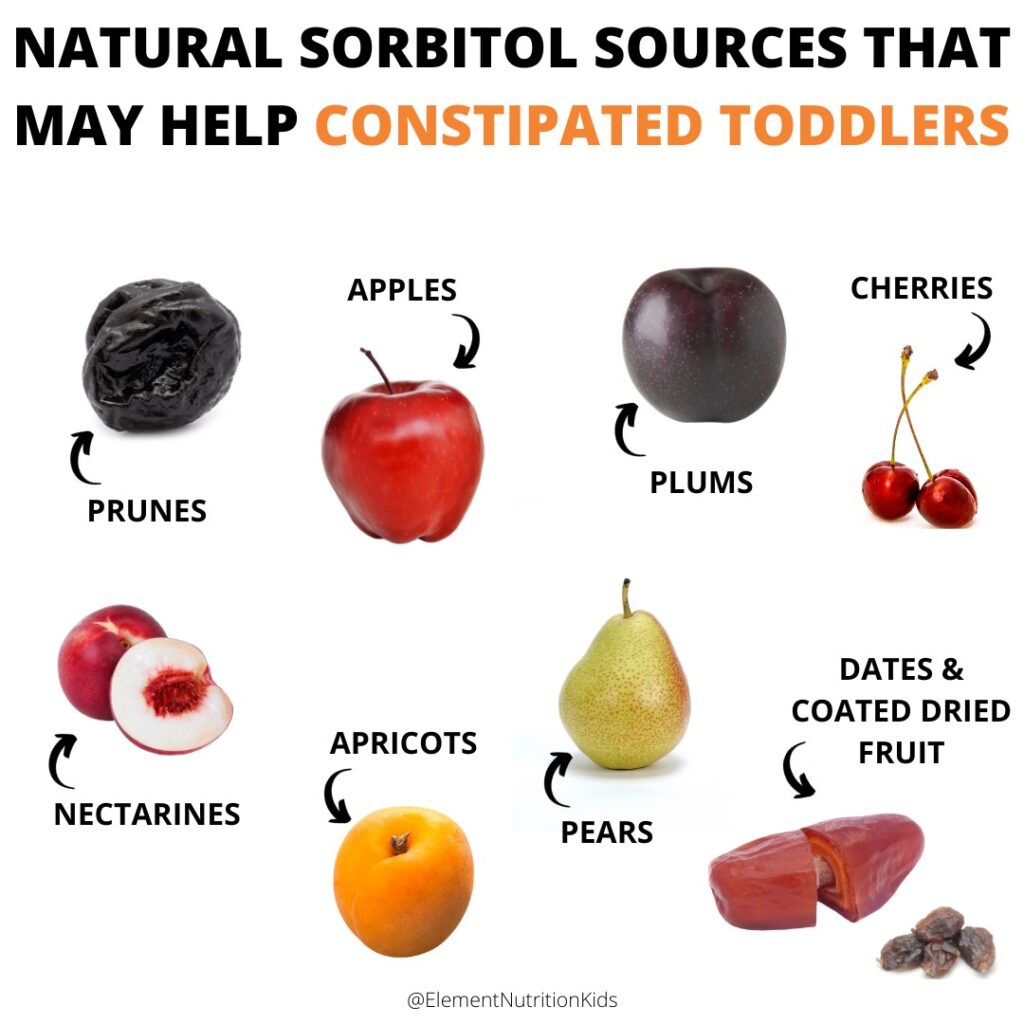
Natural laxatives for kids
High-fiber foods and those that contain natural laxatives are the best options to help with regularity because they act in the gut to get things moving.
Here are some of my favorite natural laxatives for kids.
- Fruit nectar: Nectar is different from juice. These do have added sugars but they work to stimulate the bowels due to their osmotic effect. This means they work by pulling water into the digestive tract. They work great and are sweet so kids love them.
- Prune Paste: This is one of my favorites, check out the next section for my favorite recipe.
- Dried fruits: raisins (contain tartaric acid), prunes (or prune juice), and apricots (which contain sorbitol) are great natural laxatives for kids.
- Whole grains: whole-wheat pasta, quinoa, oatmeal, and bran cereal
- Fruits: raspberries, blackberries, pears, apples, oranges (all the fruits!)
- Nuts: if your child doesn’t have an allergy, add in regular daily servings (be sure not to give whole nuts to kids under 4 years, as they are a choking hazard.)
- Seeds: Poppy seeds, sesame seeds, chia seeds, and flax seeds are all great additions to oatmeal, cereal, or smoothies
- Legumes: kidney beans, black beans, pinto beans, lentils, peas and chickpeas
- Vegetables: butternut squash, broccoli, artichoke hearts, sugar snap peas, sweet potatoes, carrots & pumpkin
- Probiotic-Rich Foods: kimchi, kefir, yogurt, pickled cucumbers, tempeh & miso
- Molasses: it seems odd but it’s actually easy to incorporate. Molasses is rich in magnesium which may help with constipation. Mix into smoothies or add into oatmeal.
Parents often ask me if they should avoid giving their kids bananas when they are constipated and the short answer is no. Ripe bananas (yellow to brown) contain soluble fiber which can help treat constipation. However, unripe bananas (green bananas) have high levels of resistant starch, which can actually make constipation worse. So when it comes to constipated kids, browner bananas are better.
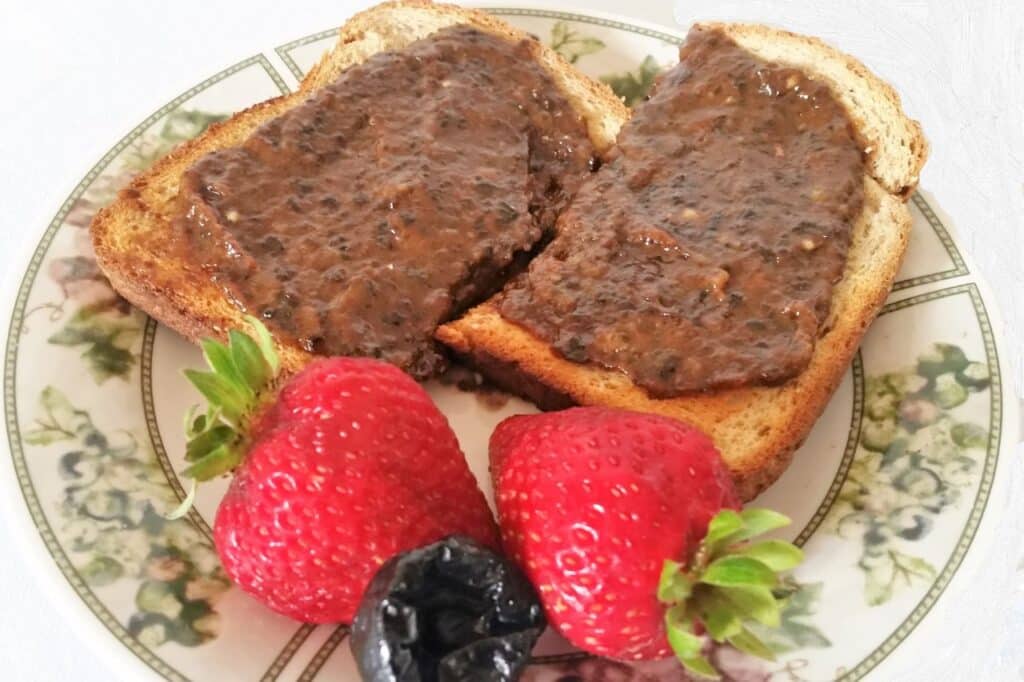
Prune paste recipe for constipation in kids
My favorite recipe for constipation is actually a prune paste. Years ago when I used to manage the kitchen in a senior home, this was one of my go-to recipes for them. Crazy I know, but the elderly and kids are the two groups most affected by constipation.
Prunes work well for constipation since they are natural laxatives. Whole prunes are great for older kids, however, for toddlers and babies, they pose a choking hazard. This is why I love prune paste for all ages!
Prune paste is easy to make! You can mix it into oatmeal, spread it on toast, or add it to baked goods like muffins, pancakes, etc. (use it to replace sugar!)
Ingredients:
- Pitted prunes (1 c)
- Dates (pitted) (1/2 c)
- Dried raisins (1/2 c)
- Water (1/2 c)
- Orange juice (1/2 c)
Directions
- Put water and juice in a bowl and add dried fruit, soak in the refrigerator for 1-2 hours.
- Pour everything into a food processor and blend until smooth.
- Store paste in the refrigerator for 1 week or in the freezer for up to 3 months.
Fruit juices for constipation
Fruit juice is one of the more common “go-to” for constipation by many parents. However, aside from being a fluid (which does help), fruit juice is not one of my top natural constipation relief recommendations.
Some fruit juices (like prune juice and even apple juice) can help, but most other fruit juices don’t help significantly enough to make them worth it as a constipation cure. Instead of fruit juice, focus on increasing water intake along with the previous recommendations in this post.
If you are going to add something extra in the drink category, go for the fruit nectar, which as I previously mentioned has more of an osmotic effect (that helps constipation more than plain fruit juice.)
Fiber supplement for kids
Parents often ask me if they can give their kids a fiber supplement. Some examples include Metamucil, Benefiber, and fiber gummies. I am not a huge fan of fiber supplements.
Too much fiber (especially in the form of a supplement) and not enough water can actually make constipation worse. For most kids, increasing fiber from the foods they eat is the best way to add more fiber to the diet.
Always have a good chat with your child’s doctor or pediatric dietitian before starting a fiber supplement.
Home remedies for constipation in toddlers
I wanted to talk specifically about constipation in toddlers because it is common and toddlers are a whole different category of challenging. There are many reasons for constipation in toddlers, but the top reasons are related to potty training (they are still learning how to identify their urges) and picky eating.
When toddlers are first learning to use the potty, they might resist the urge to go so they don’t miss playtime (just like in older kids). The more they hold it in, the higher the risk of constipation. And, since they are not skilled yet at going to the bathroom toddler constipation can get bad quickly.
Toddlers also might drink less water so they don’t have to stop playing to pee as well. Lack of water and withholding together can contribute to backups.
You can help them by intentionally stopping playtime and bringing them to the bathroom to form good bowel habits. Be sure to explain to them that they won’t miss out on anything and it will all pause while they go potty.
Having a good chair for potty training is also important so they have a good seated position (no legs dangling). Toddler potty chairs or a stool under their feet on the big potty will help the poop come out easier.
Just like with older kids, focusing on fiber and fluid in toddlers is important. You can also try out these recipes for constipation in toddlers.
Picky eating and constipation
Picky eating in toddlers is also a top cause of constipation. During this phase, toddlers decline more fruits and veggies and tend to opt more toward the foods that are “white.” Think bananas, french fries, white toast, chicken nuggets, pasta, sugary or sweet muffins, and bread.
Growth also starts to slow in the toddler years so they have less appetite, which also rears its head as picky eating.
Many of their “preferred foods” lack fiber which is important to help move things along. If you have a picky toddler at home, be sure you learn how to address that first.
You can download my picky eating guide to get you started if you need more support.
Is your baby constipated after starting solids?
If your baby is constipated after starting solids, you are not alone. Constipation is one of the most common issues parents face when they start introducing solid food. Babies have an immature digestive system which develops greatly in their first year of life. Because of this, it takes a bit more time for their bodies to get used to breaking down more solid foods.
Additionally, solid foods (even purees) have less fluid content than breastmilk and formula. The reduction of fluid when starting solids, even a small amount, is enough to throw their immature digestive tracts off balance for a bit.
Luckily, it’s easy to get them back on track by keeping the introduction of new foods gradual and by continuing to encourage enough fluid intake. At this age, a lot of water isn’t necessary, they will get enough fluid simply by maintaining their breastmilk or formula feeds in the first few months of the starting solids process. Breastmilk is a natural laxative, so if you are breastfeeding, your milk can be powerful in helping your baby poop. Overall, breastfed babies tend to have fewer issues with constipation.
However, If the constipation is persistent, you can add a couple of extra ounces of fluid each day (1-2 oz. should help). Avoid giving more than 1-2 oz of extra fluid though because you don’t want to fill their belly too much, which could reduce the important nutrients they get from their breastmilk or formula.

Natural remedies for constipation in babies
While constipation is common in babies, it isn’t fun. So here are a few extra things you can do to help your baby get things moving.
- Add 1-2 oz. of additional water each day (no more!)
- Give a warm bath to help relax their tummy muscles
- Provide a gentle belly massage by rubbing in a circular motion and moving their legs in and out with your hands
- Encourage movement appropriate for age (tummy time, playtime, crawl time, etc.)
- Serve a variety of fruits, vegetables, and whole grains.
- Higher sorbitol foods may help (prepared appropriately for age.) Apricots, apples, pears, blackberries, dates, peaches, cherries, plums, prunes, broccoli.
- Provide probiotic-rich foods and potentially a probiotic supplement (if okayed by your baby’s pediatrician.)
Summary
Having a kid with constipation is no fun, but it is super common. While kids with more severe chronic constipation (and some medical conditions) may need some form of medication management, most kids can see improvement with a few simple diet and lifestyle changes.
There are many natural remedies for constipation you can try at home. Increasing fiber from fruits, vegetables, legumes, and whole grains is a good first step for your child’s diet, along with getting enough water. Your child’s body needs sufficient water to help move the food (and added fiber) through the GI tract.
Giving your kids foods that are naturally higher in sorbitol can also help. Prunes, apricots, pears, dates, and broccoli are a few. Probiotic-rich foods may also be beneficial by increasing the healthy bacteria in the gut.
Getting plenty of playtime is key for kids, aim for at least 60 min. of movement per day.
If you’ve done all these things and are still struggling, be sure to have a chat with your child’s pediatrician and/or request a referral to see a pediatric dietitian. You can also reach out to me if you have more questions by email.

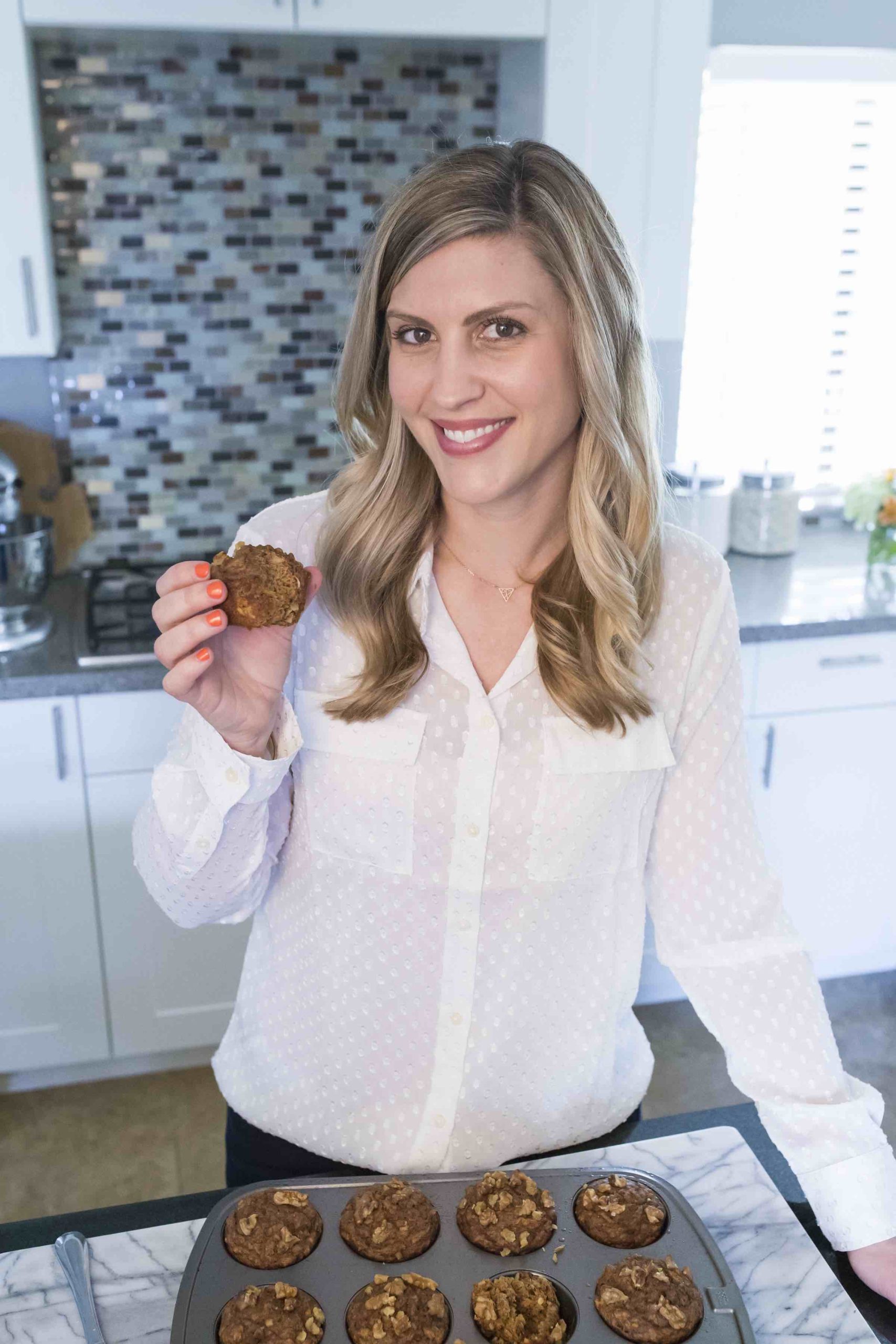
Thank you for this article. Really need help with my picky eater and will start introducing the above list.
The prune paste is great! My kids love it and they are older. It works well for us. )
Yes! I’m so glad to hear this, I think prune paste is an easy and often overlooked way to help constipation. Back in the day when I used to manage a kitchen in a healthcare facility, we used prune paste a lot! It’s great since it works well for babies, toddlers, bigger kids and adults too 🙂